Beyond Sparkles and Chat
AI helps best when it stops taking the center-stage
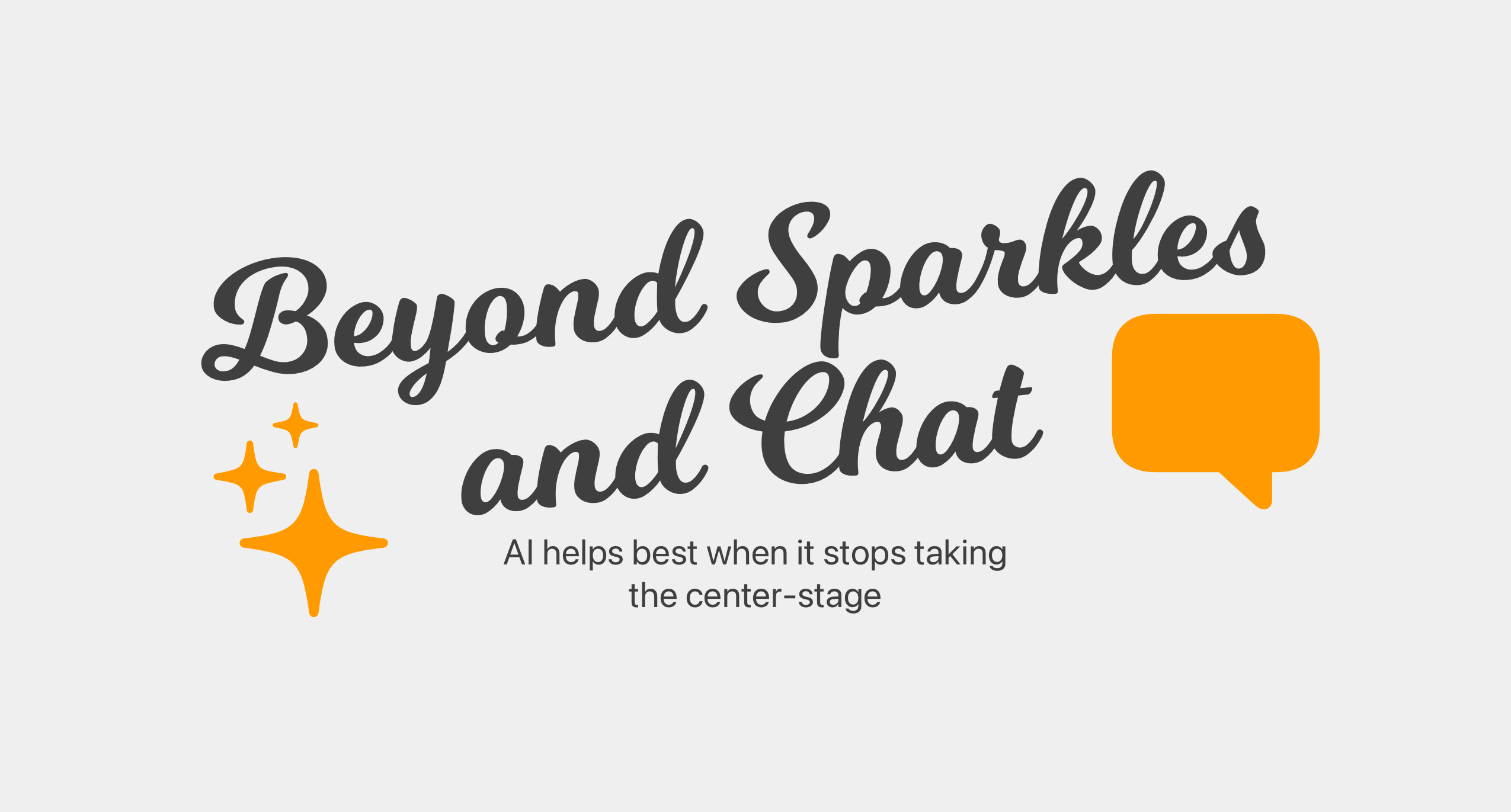

Here's a quiz question. What does this sparkle mean? If you've been following technology news, it could mean any one of the following: It could mean AI Search, it could mean AI Image generation, it could mean a generic AI powered feature?
So Sparkles = AI? Right? But what is AI? The two letter word abbreviation doesn't really mean much. It's become synonymous with a ChatGPT style interface in the last couple of years, but a chat interface is not ideal in so many places. Moreover, Its definition is ambiguous because its use cases have been ambiguous too.
I can’t clearly understand how these two letters will make my life better, without more context. AI Image Generation? How is it better than normal image generation?
AI is not a feature, it's one of the many technologies that empower people to fulfill their wants and needs. It doesn't always have to be the center-stage, it doesn't always have to be in your face. The focus should always be on human needs.
Over the last couple of years I've developed a framework for designing with emerging technologies, i.e. the Action-Centered Design Framework. Here, I focus on the actions that people perform to fulfill their wants and needs and design tools that best help them perform those actions.

Here are some example of AI features, that go well beyond sparkle icons and chat interfaces and address real human needs.
AI features that go beyond chat
Not everything needs a chat interface and not every feature need to be called AI-thingamajig; features can be descriptive and go beyond traditional chat-interfaces.
Pronunciation Tips in LookUp

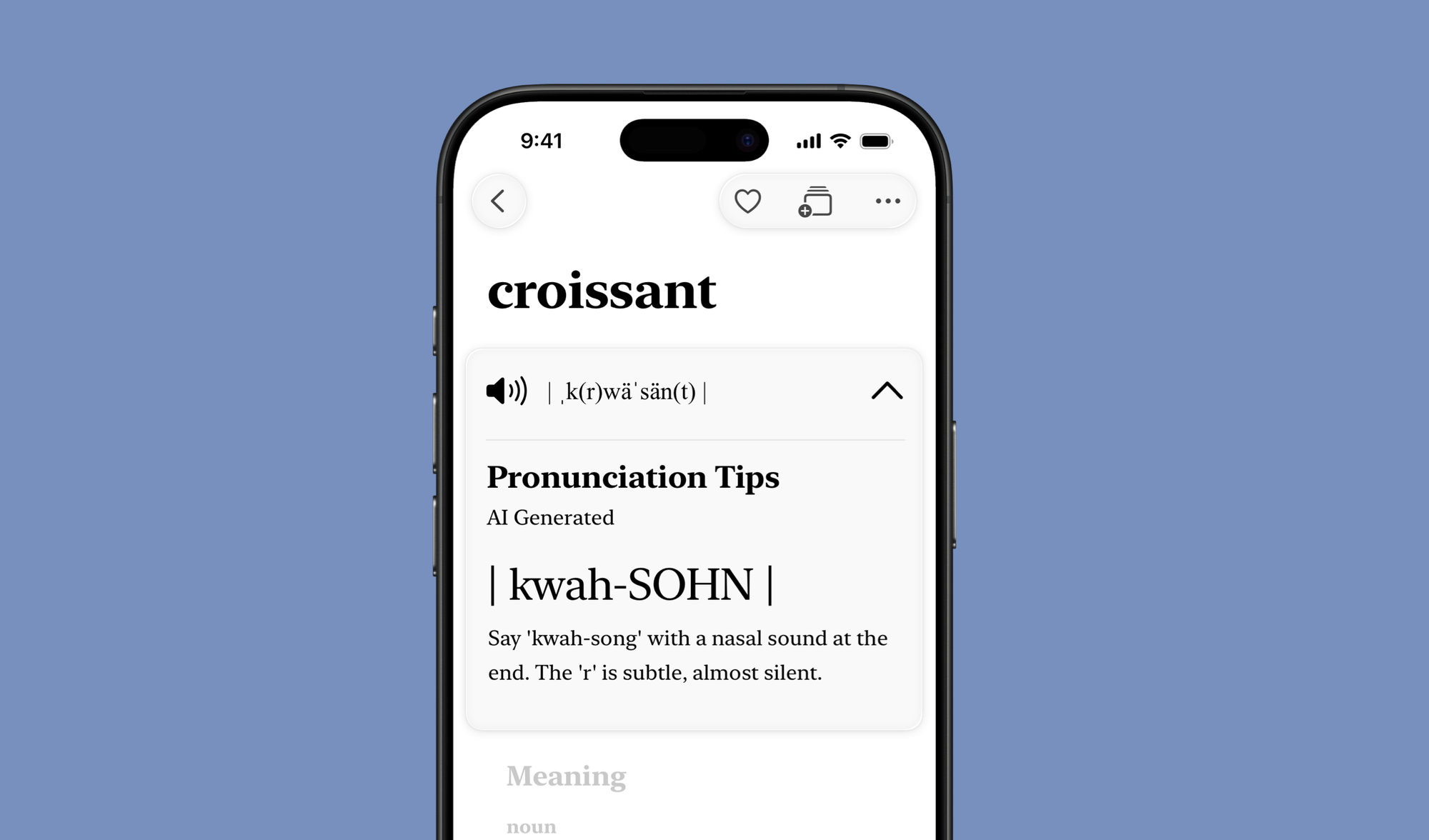
Over the years, non-native english learners who use LookUp have requested a better way to learn pronunciations. IPA notations and sometimes even the voice aren't enough, people want more tips to learn how to say certain words.
LLMs not only enable us to provide that information, they also enable us to provide contextual tips that understand the person's context i.e. in this case – their proficiency, native language and interests.
And that brings us to the pronunciation tips feature for LookUp. Pronunciation Tips provide an easy to understand phonetic pronunciation (sometimes even in the native language of the user if that's helpful) and helpful tips on what letters to stress on, and what to ignore.
Connotations in LookUp

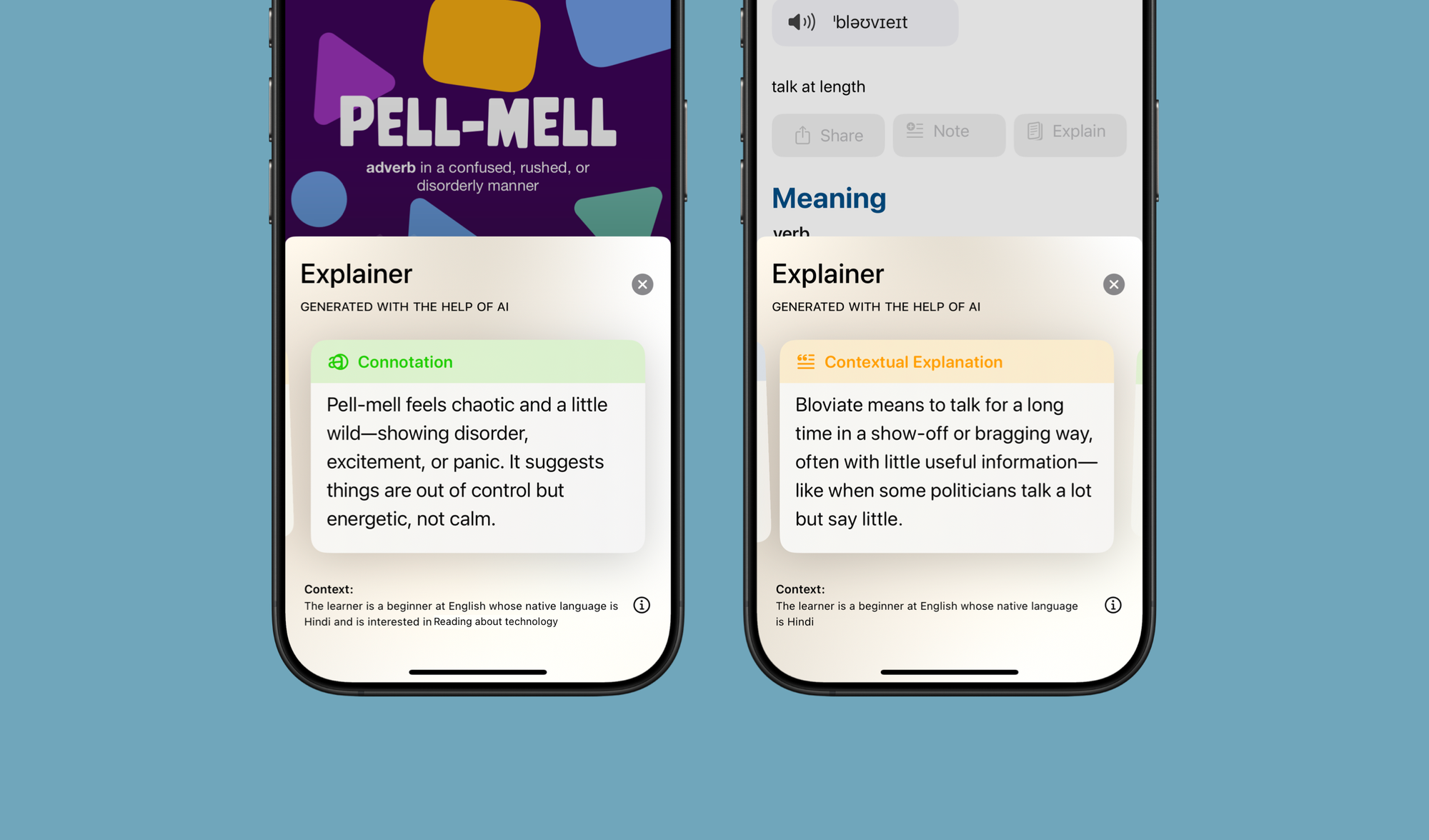
Notice how LookUp's explainers use a shared-understanding of context always making it clear what the app knows about the person, and always making it clear when something is AI generated.
These AI generated explainers go beyond the basic definition, and help non-native english learners develop a better understand of how to use a word. One may understand the meaning of a word, but where to use it is a whole different story, helping them draw parallels to their own language helps a long way here.
Shiuli: Making Images more Accessible


My upcoming app Shiuli, enables people to share media with alt-text. It uses LLMs to generate an alt-text (text that describes the image in case it's not visible to internet users). The powerful vision models offer a great starting point for people to create alt-text for the images they're sharing online.
Often times, people even though well intentioned, struggle to get started with improving the accessibility of the work they share online; Shiuli bridges the gap, by meeting the people where they are and offering handy extensions and shortcuts to let them generate and copy alt-text for use easily.
Designing the next-gen of computing platforms
AI features can be used to design much more than just apps. They can be used to solve problems creatively.
Thought Lamp


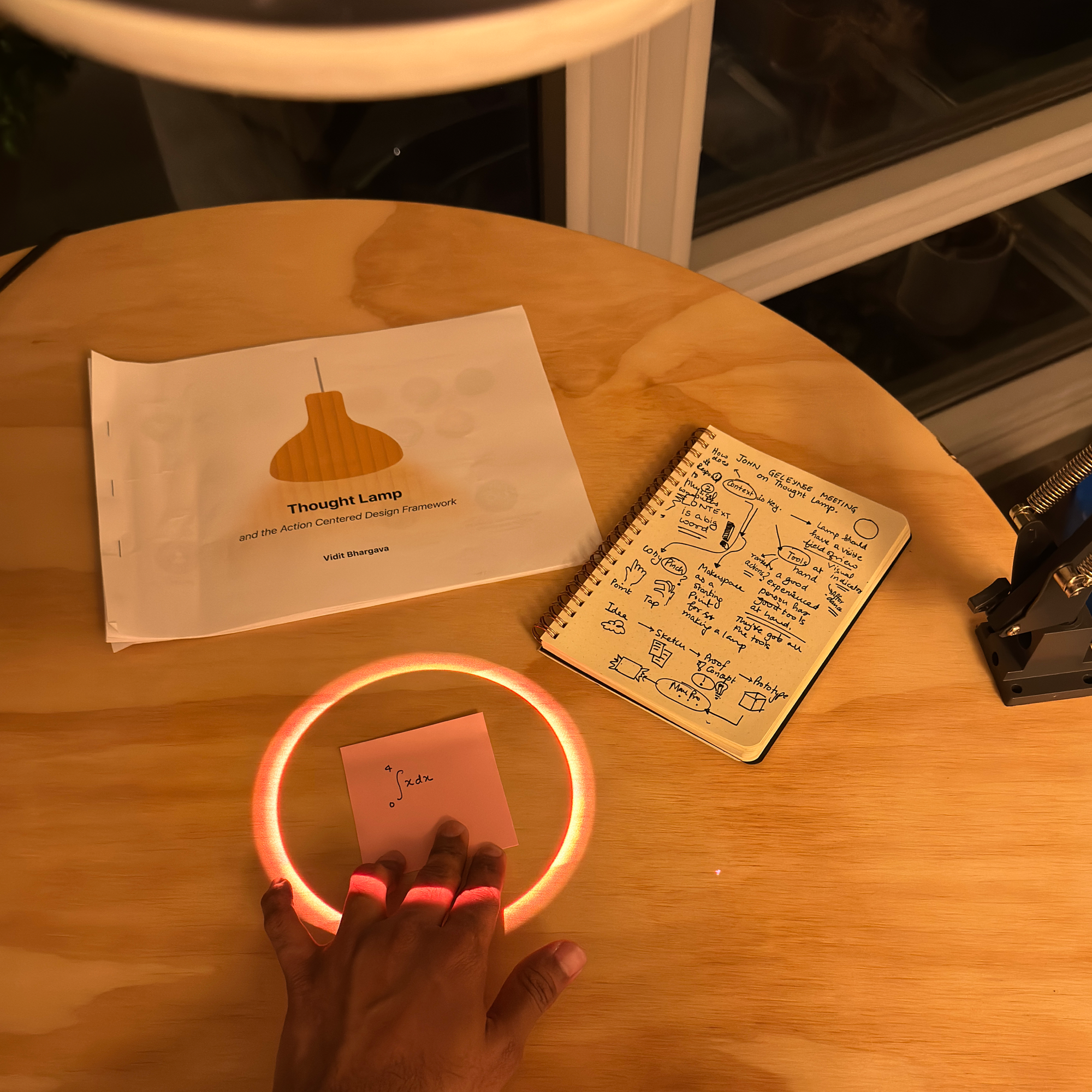
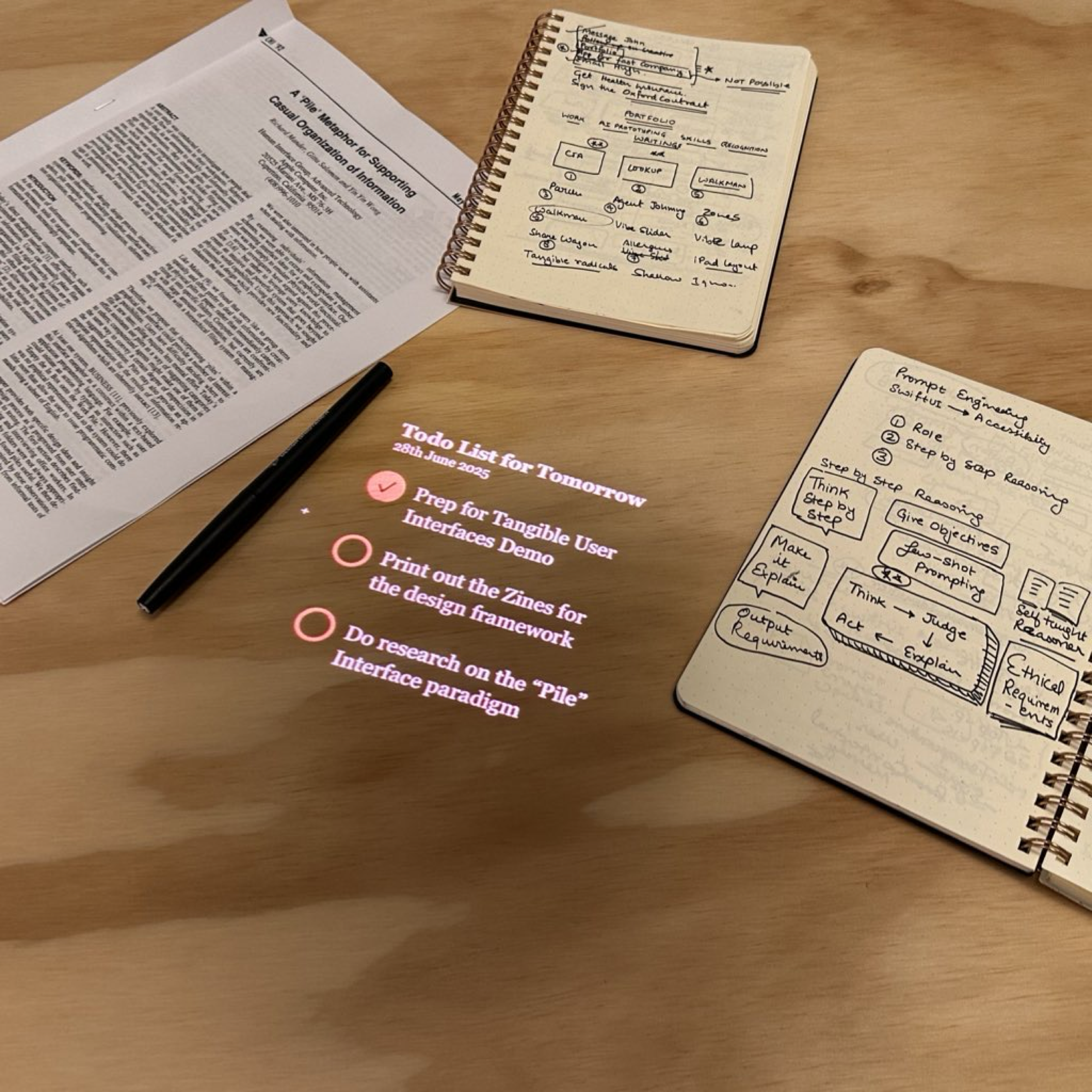
The Thought Lamp is a smart lamp that serves a student's desk lamp until they pass it a piece of paper, it then transforms into a full-blown study companion projecting the interface on the desk, helping them perform the task right there; and then fading back into a traditional lamp when they're done.
This creates a distraction-free experience for students helping them stay connected to the work they're doing without being distracted by instagram or twitter notifications.
Want to solve a math-equation just pass a note with the equation on it and the thought lamp solves it, want to save class notes, just pass them to the lamp and it saves for your later use.

The thought lamp is great at solving math problems, taking notes, generating to-do lists for helping students stay on track with their tasks, but it's also a platform that helps developers create any action that'd help students stay on track.
Where's the AI? It's not naively solving math problems, It's the coordinator, helping pick the right action to respond to the user's query!
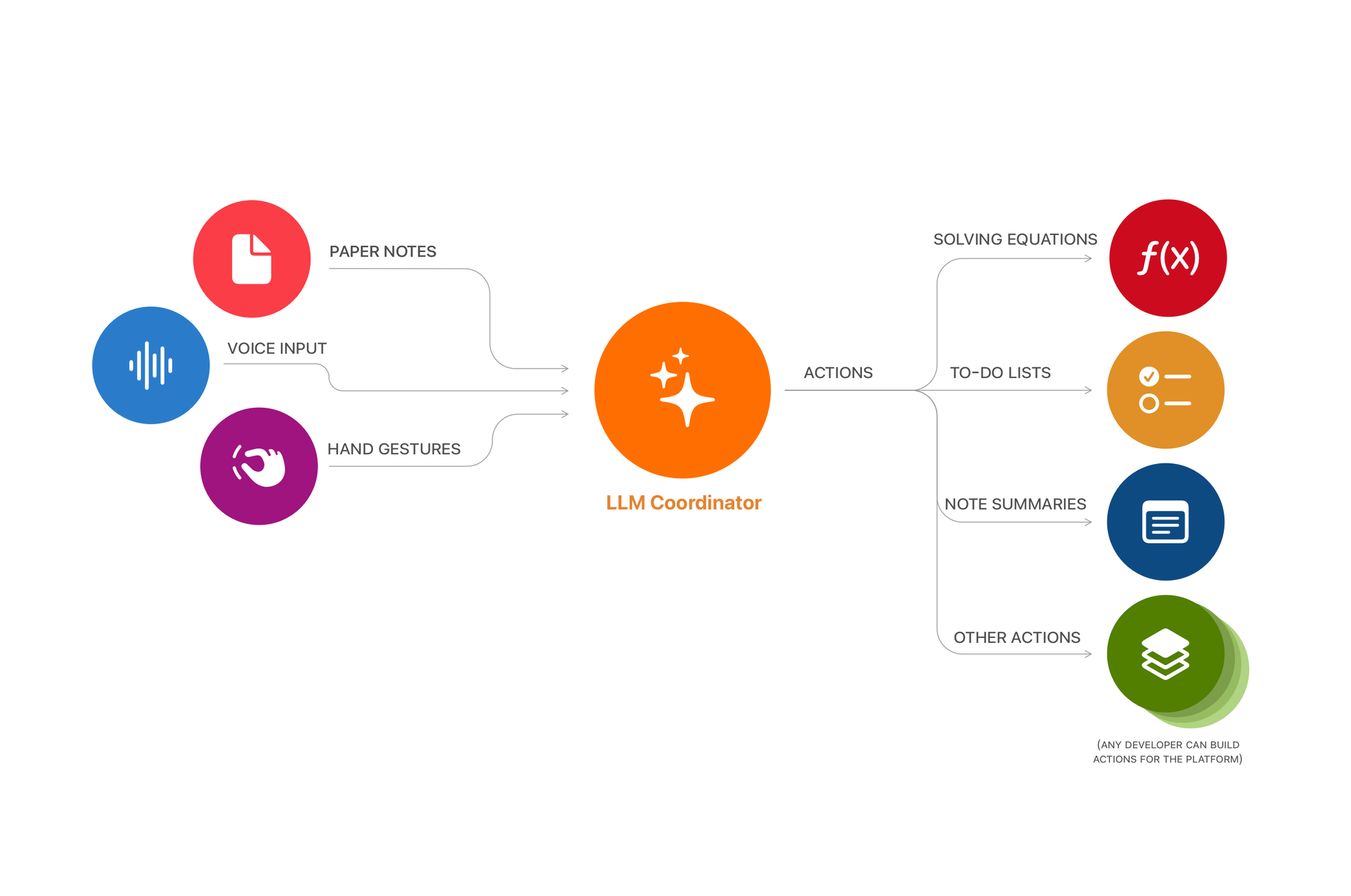
AI doesn’t need to take the center-stage
A lot of times, AI is not the lead actor. It’s a means to solve a bigger problem
Share Wagon


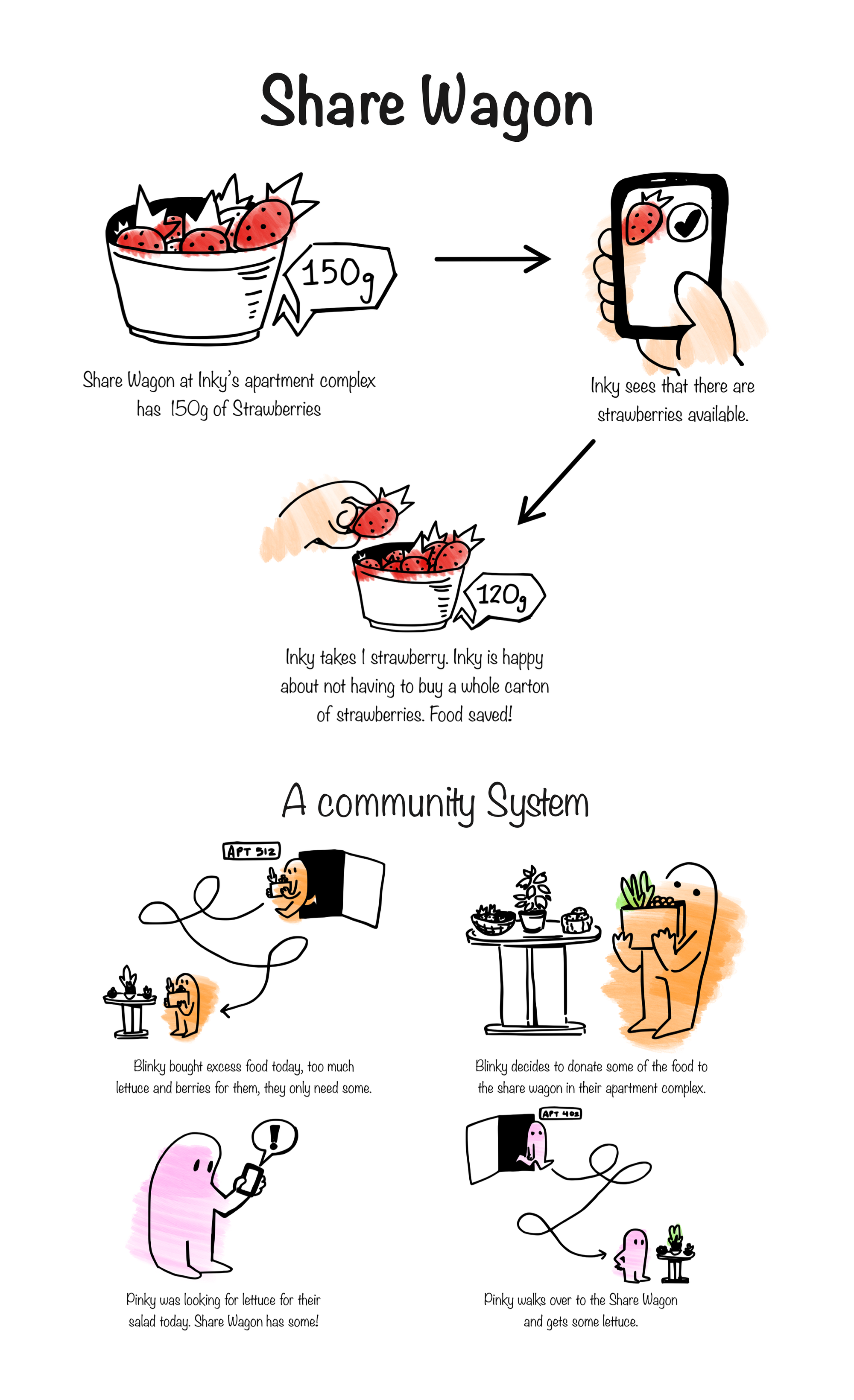
The Share Wagon is a community design system that works on community sharing of excess groceries in an apartment complex to reduce food waste generated by the large package sizes of grocery chain purchases. So if you only need 5 strawberries but your grocery store doesn't sell you less than 20, you can always share the excess 15 with the apartment complex.

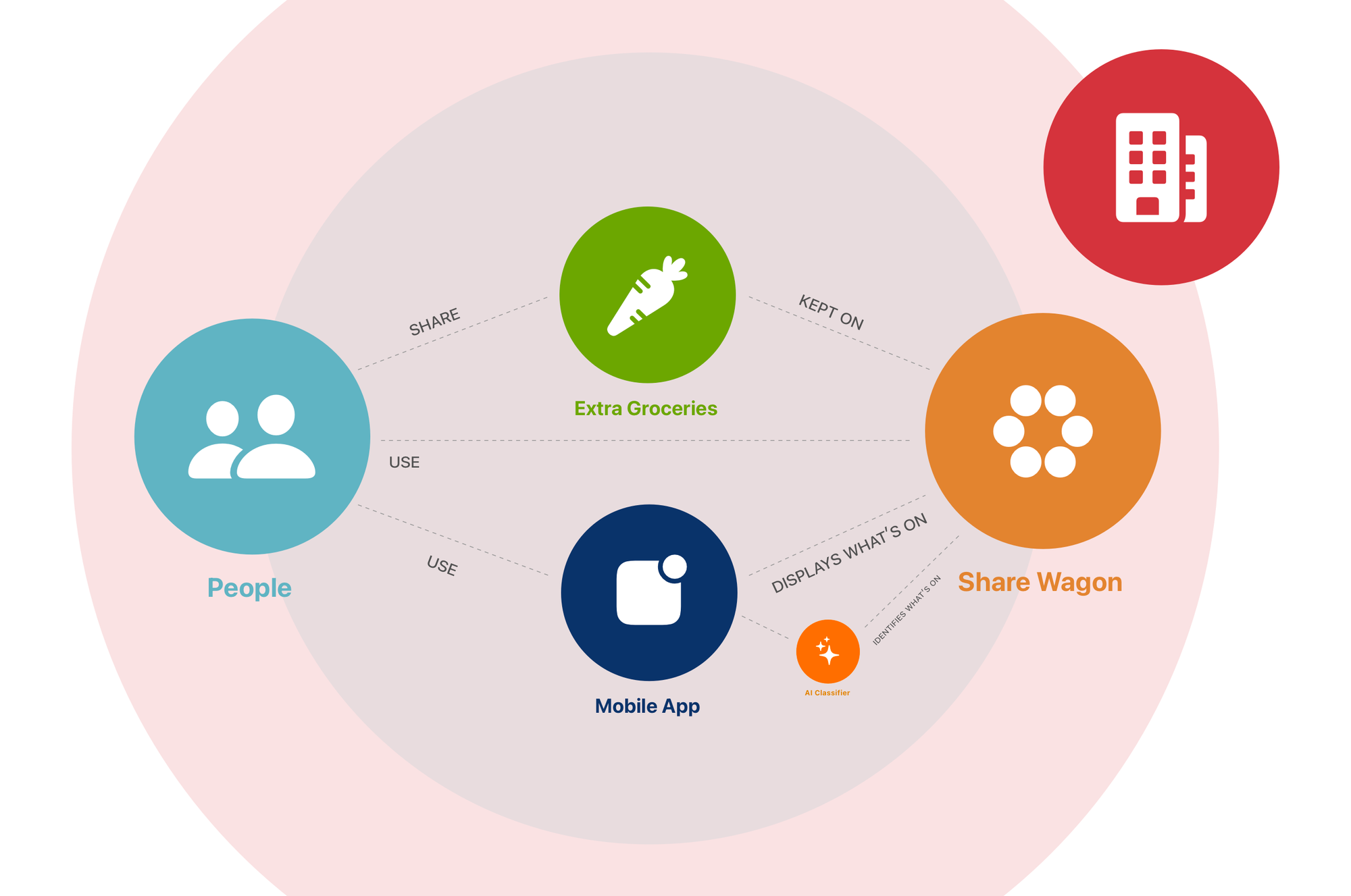
The mobile app in the system acts as an inventory management system helping residents stay on track with whatever's available in the wagon. The app's UI shows how much and what item's available to pick from the Share Wagon.
Each time someone puts groceries on the share wagon cart; its weight sensors capture the weight of the grocery item and an overhead camera clicks a picture. Sending it to the app's servers where it uses AI to estimate the quantity of the food based on the food item identified from the captured image and the recorded weight.
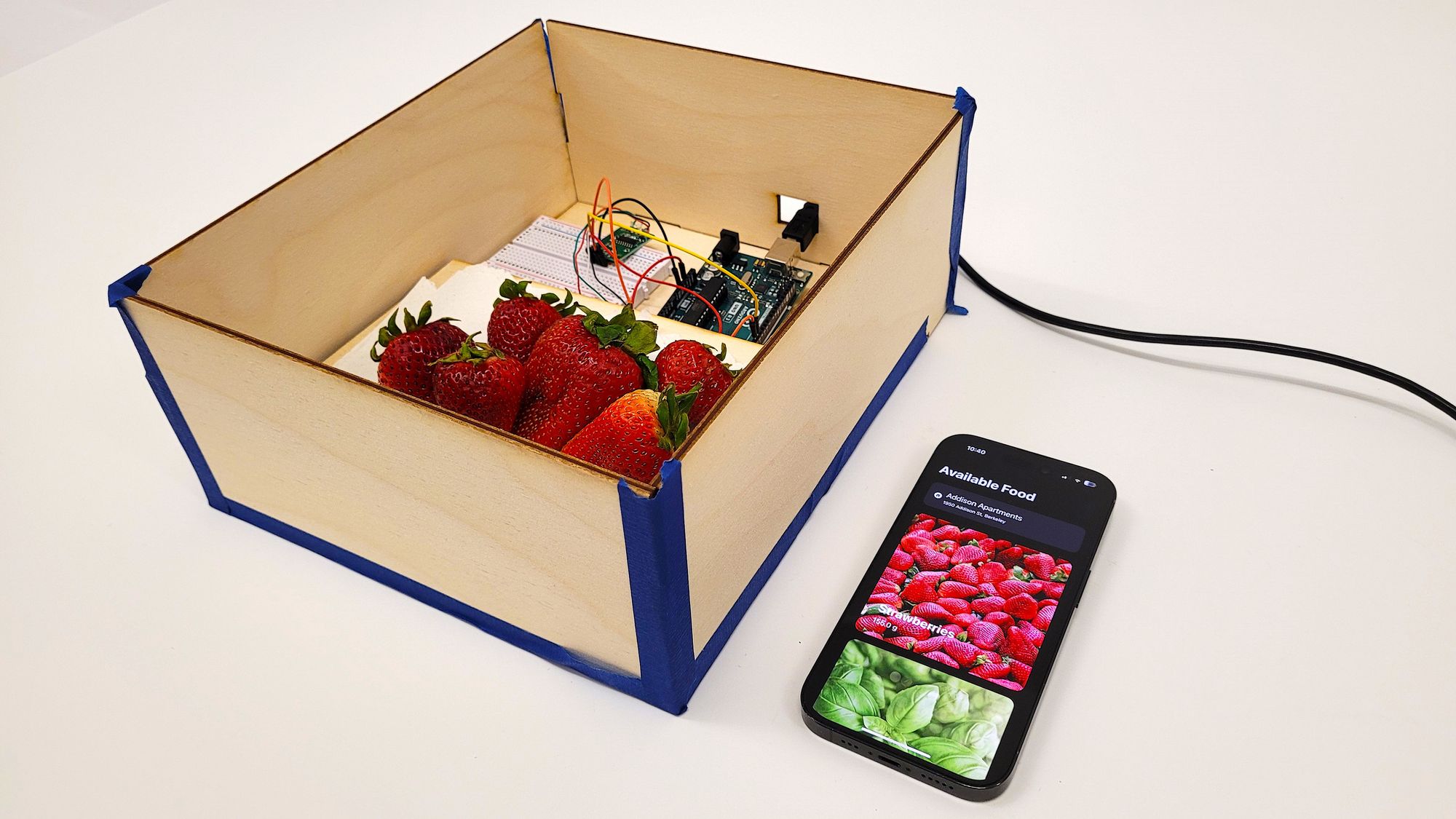

AI isn't the lead actor here, it's not even the point of the system, in-fact the system works just as well without any tech; the proposed system is about sharing food amongst a community. But the app and AI help improve the quality of the system in a small but meaningful way.
Using AI in New Media Art
AI in art doesn't have to be generative. There are more ways in which we can use it that have a meaningful impact.
Agent Johnny: an interactive crime thriller on the idea of "manufactured water crisis"


In Agent Johnny, an interactive crime thriller. the viewer receives a phone-call mid way through the movie, where the lead character must seek advice, advice that only the viewer can provide.
Gradually through these interactions, the film's narrative changes, nudging the protagonist towards the film's conclusion. This way, the viewer becomes a change-maker in a high-stakes thriller. By the end of the movie, the viewer's not only entertained but also learns about problem of "manufactured water-crisis" a wicked problem with real world consequences.

The film doesn't any AI generated visuals, yet it uses AI in a way that empowers individuals to learn something new!
This is just a tiny glimpse of how AI can be powerful without hanging on to chat based interfaces and generic branding. It doesn't always have to be the loudest voice in the room, it can make meaningful impact in small, thoughtful contributions too.

